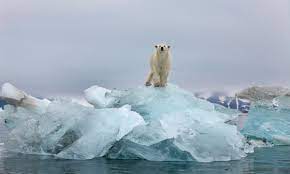Forever Chemicals : Alarming Levels In Ice Around Svalbard, Norway

An Oxford University-led recent study found alarming levels of toxic PFAS also known as “forever chemicals” in ice around Svalbard, Norway which pose a risk to the region’s wildlife.
- PFAS (Per- and polyfluorinated alkyl substances), also known as the Forever Chemicals, are a large chemical family of over 4,700 highly persistent man-made chemicals.
- They are the most persistent synthetic chemicals to date.
- These were first developed in the 1940s and are now found in a variety of products, including nonstick pans, water-resistant textiles and fire suppression foams.
- PFAS don’t easily degrade in the environment and are very mobile in water.
- PFAS’ indestructability comes from their carbon-flouride bonds, one of the strongest types of bonds in organic chemistry.
- Over time, these pollutants have accumulated in the environment, entering the air, soil, groundwater and lakes and rivers as a result of industrial processes and from leaching through landfills.
- PFAS have been found in the environment all around the world, even in the most remote areas such as the Arctic.
- They have also been detected in the blood and breastmilk of people and wildlife globally.
- Chronic exposure to even low levels of PFAS has been linked to liver damage, high cholesterol, reduced immune responses, low birth weights and several kinds of cancer.




